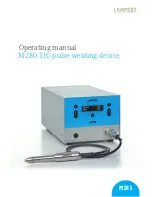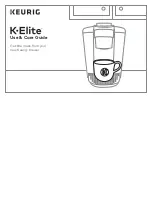
12
BOC Smootharc 180 Multiprocess operating manual
Globular Transfer
Metal transfer is controlled by slow ejection resulting in large,
irregularly-shaped ‘globs’ falling into the weld pool under the action
of gravity. Carbon dioxide gas drops are dispersed haphazardly. With
argon-based gases, the drops are not as large and are transferred in
a more axial direction. There is a lot of spatter, especially in carbon
dioxide, resulting in greater wire consumption, poor penetration and
poor appearance. Globular transfer occurs between the dip and spray
ranges. This mode of transfer is not recommended for normal welding
applications and may be corrected when encountered by either
decreasing the arc voltage or increasing the amperage. Globular transfer
can take place with any electrode diameter.
Basic flux-cored wires tend to operate in a globular mode or in a
globular-spray transfer mode where larger than normal spray droplets
are propelled across the arc, but they never achieve a true spray
transfer mode. This transfer mode is sometimes referred to as non-axial
globular transfer.
Self-shielded flux-cored wires operate in a predominantly globular
transfer mode although at high currents the wire often ‘explodes’ across
the arc.
Spray Transfer
In spray transfer, metal is projected by an electromagnetic force from
the wire tip in the form of a continuous stream of discrete droplets
approximately the same size as the wire diameter. High deposition
rates are possible and weld appearance and reliability are good. Most
metals can be welded, but the technique is limited generally to plate
thicknesses greater than 6mm. Spray transfer, due to the tendency of
the large weld pool to spill over, cannot normally be used for positional
welding. The main exception is aluminium and its alloys where, primarily
because of its low density and high thermal conductivity, spray transfer
in position can be carried out.
The current flows continuously because of the high voltage maintaining
a long arc and short-circuiting cannot take place. It occurs best with
argon-based gases.
In solid wire MIG/MAG, as the current is increased, dip transfer passes
into spray transfer via a transitional globular transfer mode. With metal-
cored wires there is virtually a direct transition from dip transfer to spray
transfer as the current is increased.
For metal cored wire spray transfer occurs as the current density
increases and an arc is formed at the end of the filler wire, producing
a stream of small metal droplets. Often the outside sheath of the wire
will melt first and the powder in the centre flows as a stream of smaller
droplet into the weld pool. This effect seems to give much better transfer
of alloying elements into the weld.
In spray transfer, as the current density increases, an arc is formed at
the end of the filler wire, producing a stream of small metal droplets. In
solid wire MIG/MAG this transfer mode occurs at higher currents. Flux-
cored wires do not achieve a completely true spray transfer mode but a
transfer mode that is almost true spray may occur at higher currents and
can occur at relatively low currents depending on the composition of
the flux.
Rutile flux-cored wires will operate in this almost-spray transfer mode, at
all practicable current levels. They are also able to operate in this mode
for positional welding too. Basic flux-cored and self-shielded flux-cored
wires do not operate in anything approaching true spray transfer mode.
Large droplet
Splatter
Workpiece
Gas shroud
Wire
Shielding gas
Droplets
Weld
Workpiece
Schematic of Globular Transfer
Schematic of Spray Transfer
Содержание 180 Multiprocess
Страница 1: ...180 Multiprocess Operating manual 6PRRWKDUF GYDQF GYDQF ...
Страница 45: ...45 BOC Smootharc 180 Multiprocess operating manual ...
Страница 53: ......
Страница 54: ......
Страница 55: ......













































